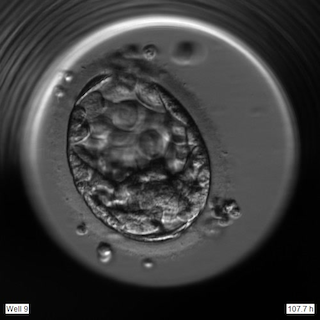Embryo Image Processing

In-vitro fertilization is a costly endeavour not just in terms of financial, but also in time and emotion. This is because of the doctor visits, medical problems associated with the procedure and an overall low percentage of successs. Our principal investigator is involved with a doctor who wanted to task students to test out his hypothesis on image detection and growth rates of embryos. Since IVF is very expensive, early detection of an embryo being unviable is the main goal.
This program was related to my sophomore year project, where our group was tasked to further enhance the past semesters progress. The current program was was coded in MatLab and utilized the image processing tools/libraries and batch processing capabilities. In the end, we were able to get it down closer and more accurate by drawing circles around the embryo which in the end had an error rate of ~%10-%15 when compared with manual detection.
This was my first foray into the world of MatLab and its capabilties. My interest to work in Matlab was not piqued during this time though and so I have not done anything else with it since. Although, since I was exposed to a multitude of its libraries I won’t reject another chance to work with the language again because of its diverse offerings. It was also my first dive into an application that bridged the gap between the medical world and computing. This was just a step because my junior year project would be combining another world with computing.